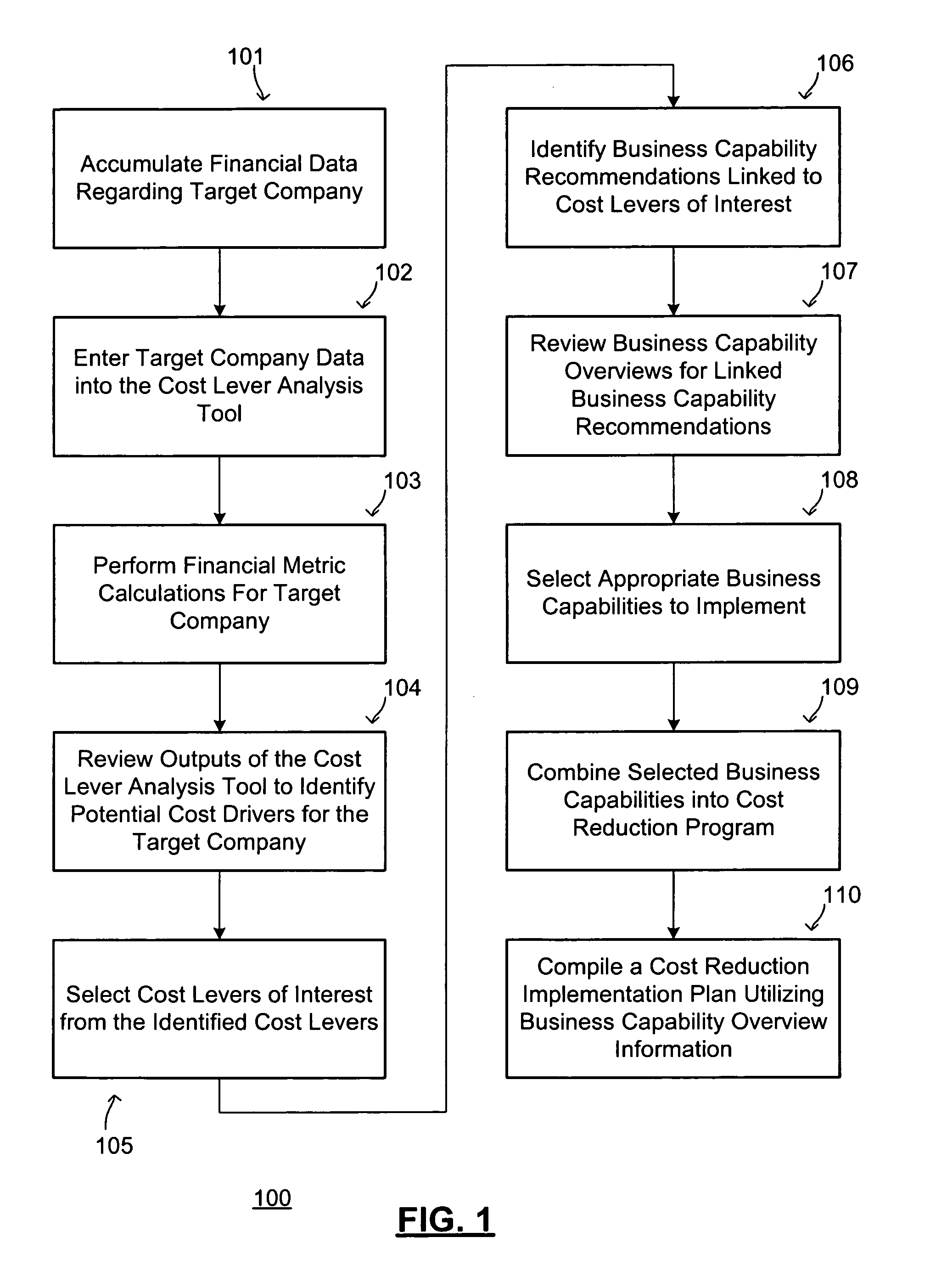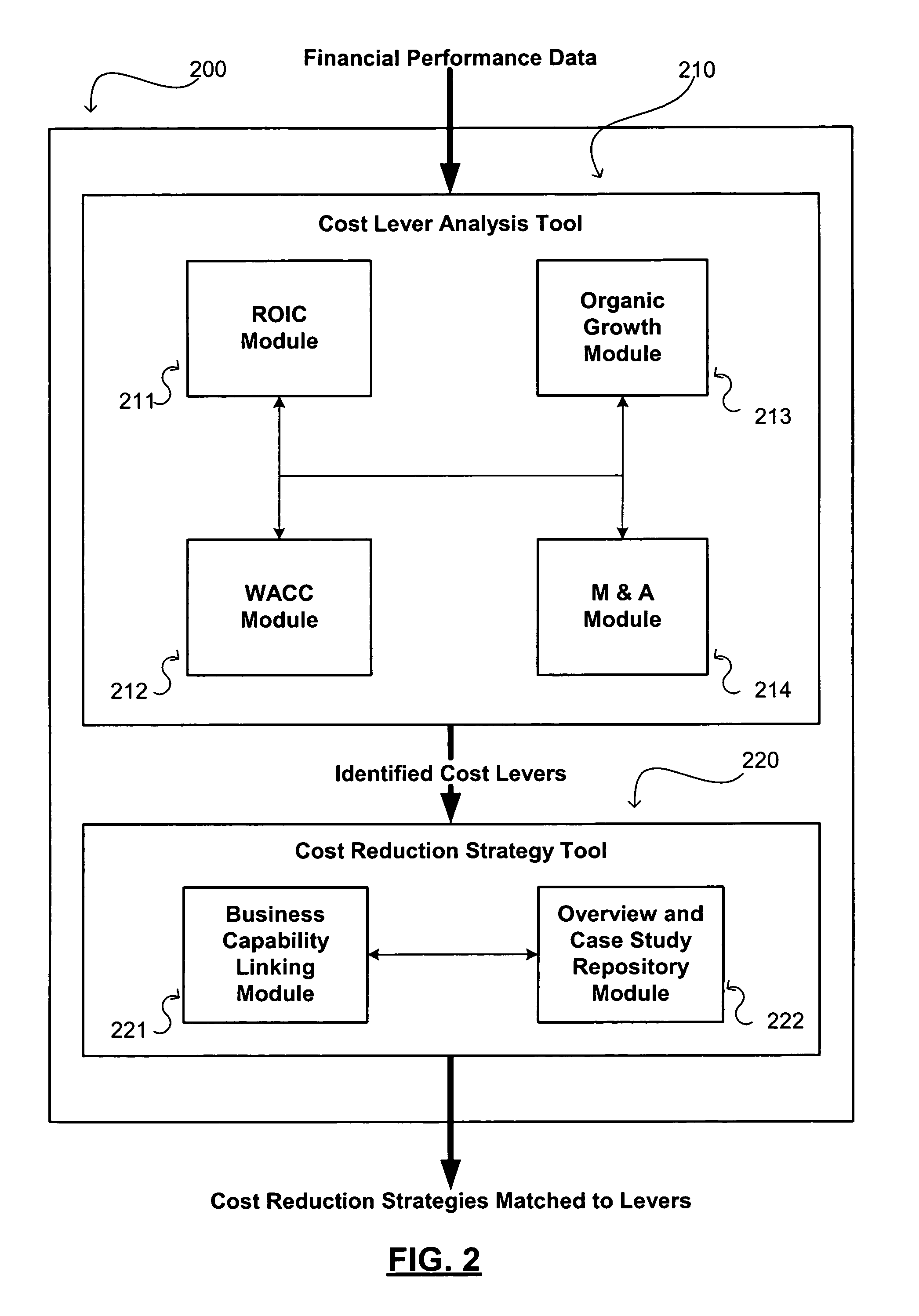Cost analysis and reduction tool
a technology of cost analysis and tool, applied in the field of cost analysis and reduction tools, can solve the problems of more difficult implementation, coincidental declines in production or resource shortages, restructuring-based cost reduction strategies, etc., and achieve the effects of reducing customer service staffing costs, reducing supplier numbers, and increasing profitability
- Summary
- Abstract
- Description
- Claims
- Application Information
AI Technical Summary
Benefits of technology
Problems solved by technology
Method used
Image
Examples
example
[0106]In this example, a company has the following financial numbers:
[0107]βL=0.79
[0108]TR=40%
[0109]E=$2,781 Mill.
[0110]D=$747 Mill.
[0111]RF=5%
[0112]MRP=5%
[0113]KD=7%
For the company in the analysis, the β value is preferably unlevered using Equation 13, as described above. Thus, the company has
[0114]βU=βL / [1+(1-TR)*D / E]=0.79 / [1+(1-40%)*(747 / 2781)]=0.68
[0115]As described above, the unlevered beta values βU should generally fall close to the industry average (within a range of + / −0.25). Unexplained outliers should be adjusted to the industry average to account for measurement errors in calculating betas. For instance, if the industry for the company in this example has an average βU of 0.35, the difference between the two βU values exceeds 0.25. Accordingly, the cost of equity should be recalculated using the industry average βU value. Returning again to Equation 12 from above and using the industry average βU value (βU(Industry)), we can make the following calculations:
[0116]βU=...
PUM
 Login to View More
Login to View More Abstract
Description
Claims
Application Information
 Login to View More
Login to View More - R&D
- Intellectual Property
- Life Sciences
- Materials
- Tech Scout
- Unparalleled Data Quality
- Higher Quality Content
- 60% Fewer Hallucinations
Browse by: Latest US Patents, China's latest patents, Technical Efficacy Thesaurus, Application Domain, Technology Topic, Popular Technical Reports.
© 2025 PatSnap. All rights reserved.Legal|Privacy policy|Modern Slavery Act Transparency Statement|Sitemap|About US| Contact US: help@patsnap.com



